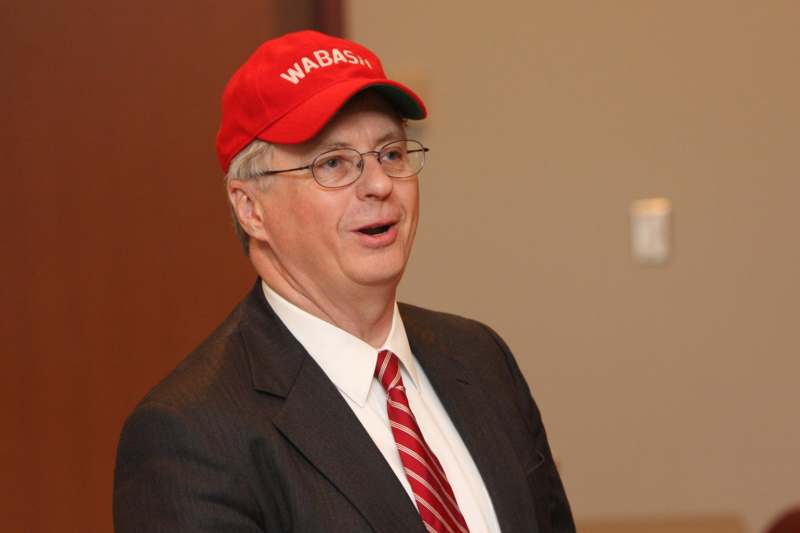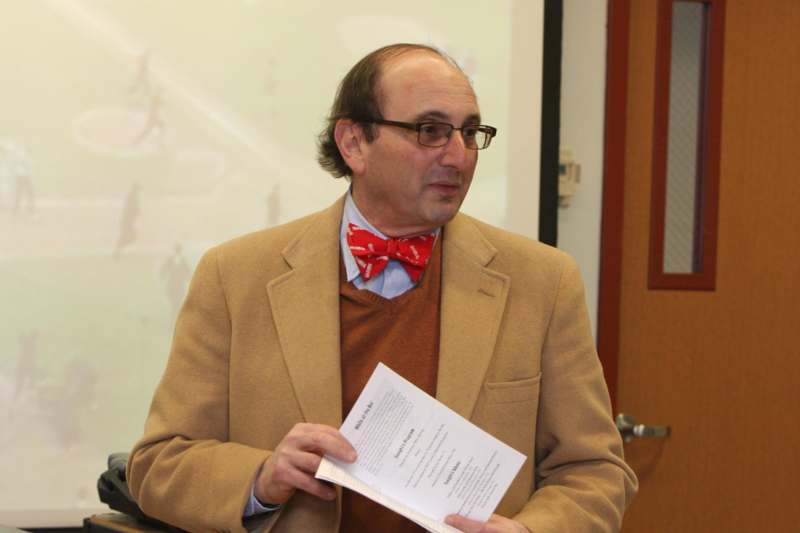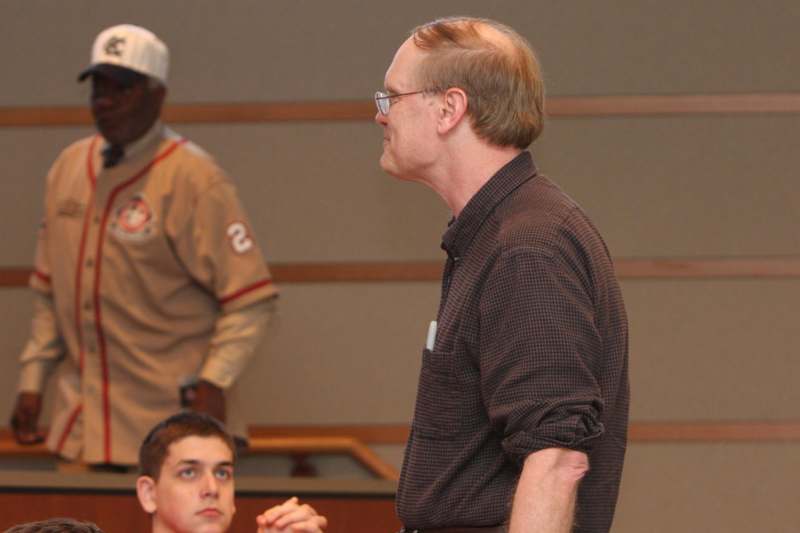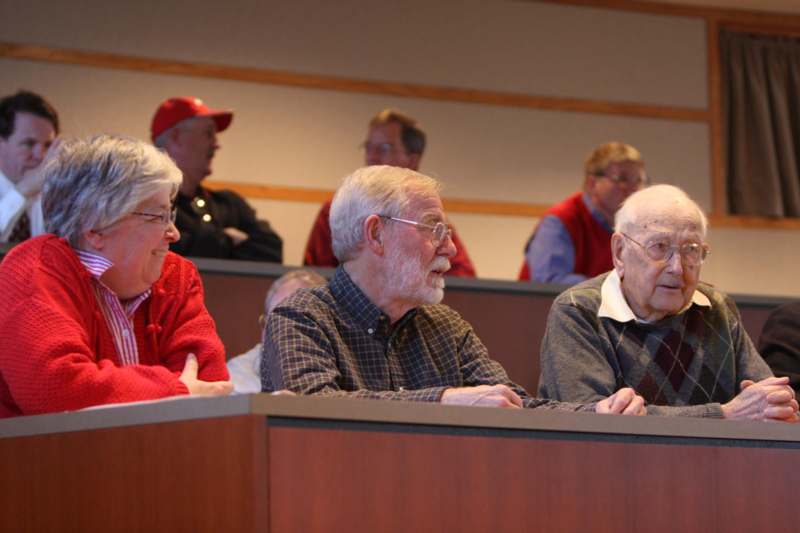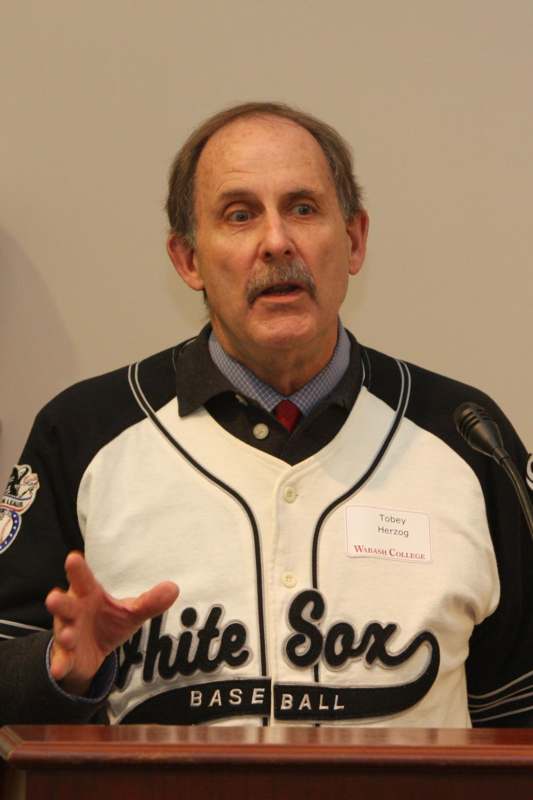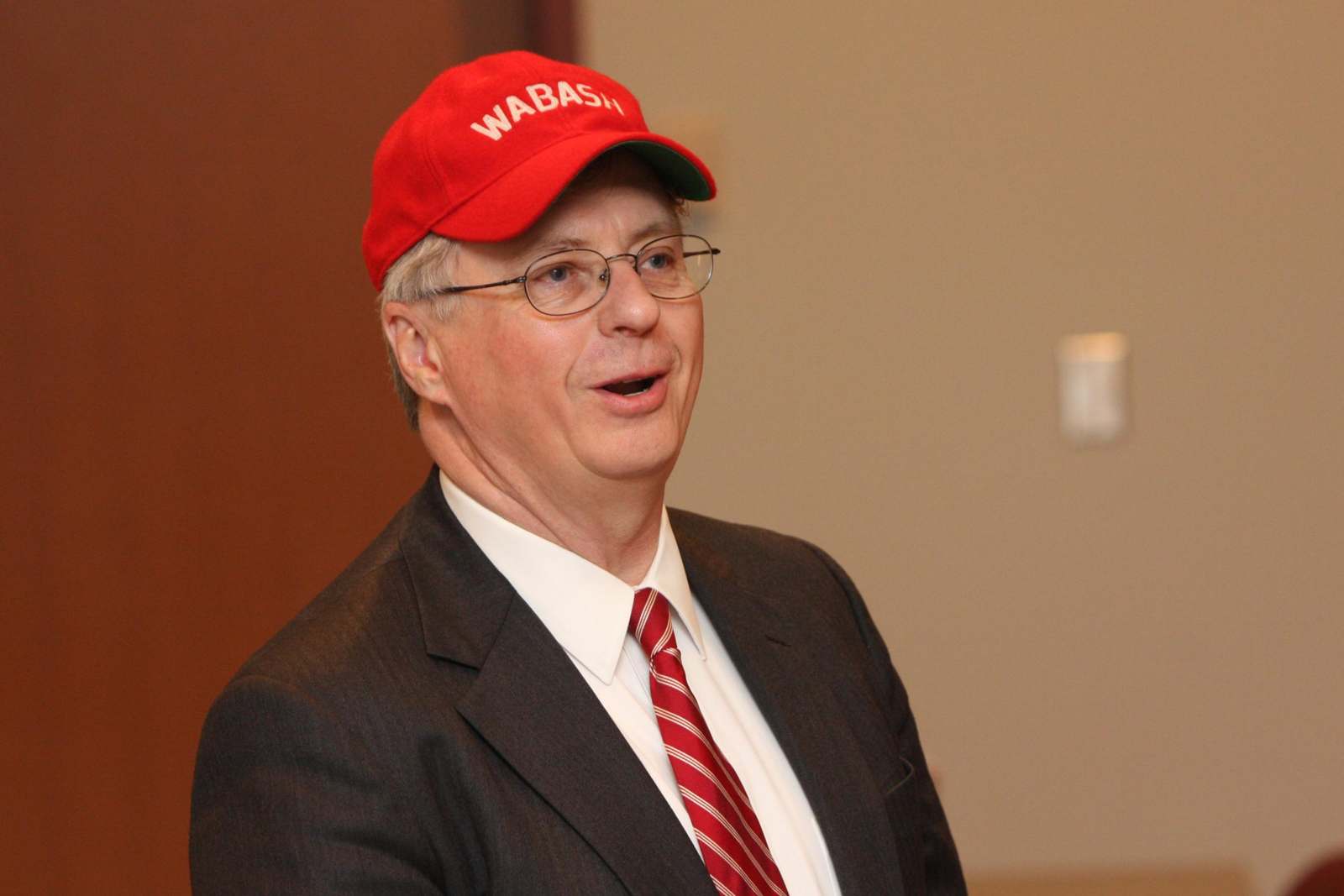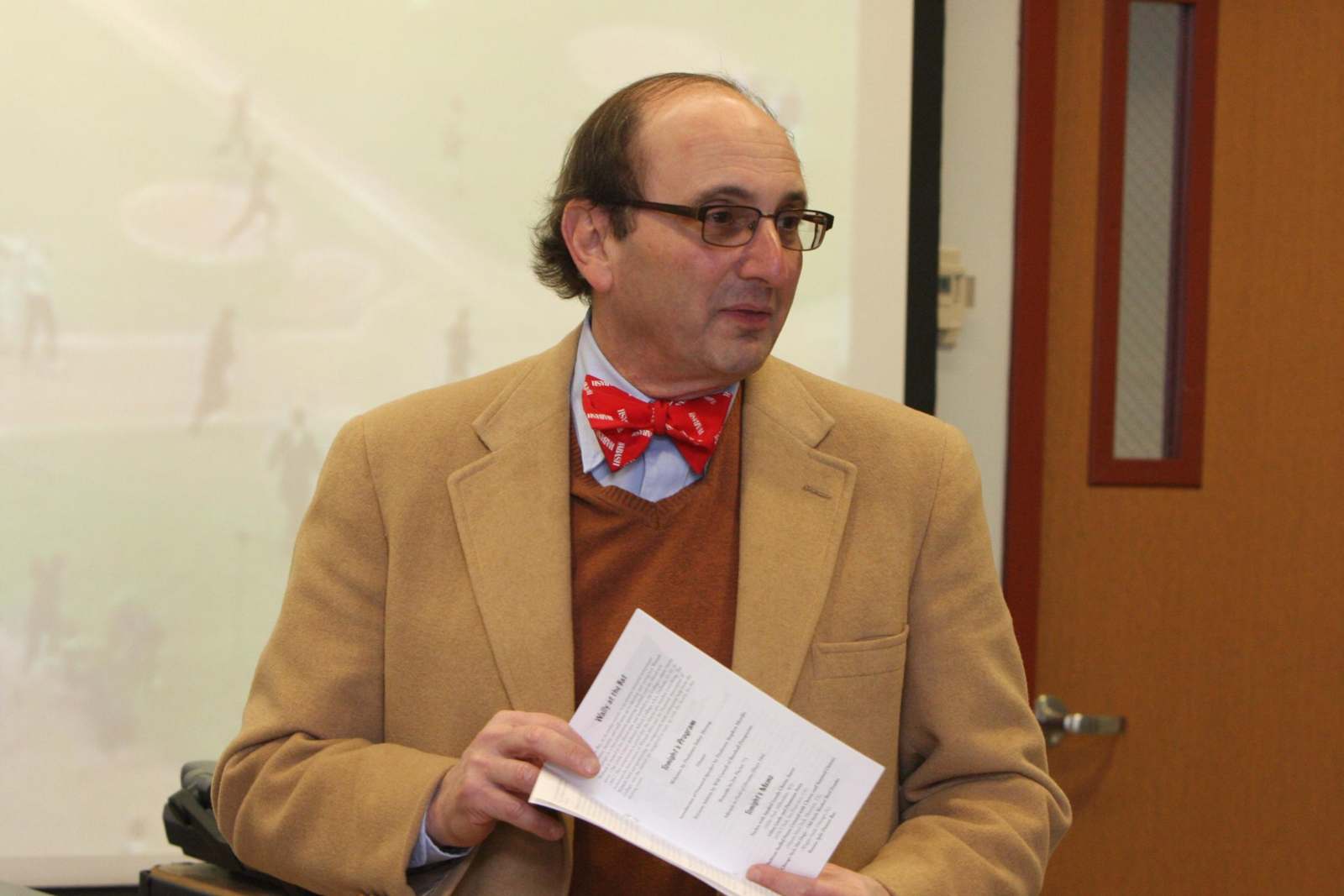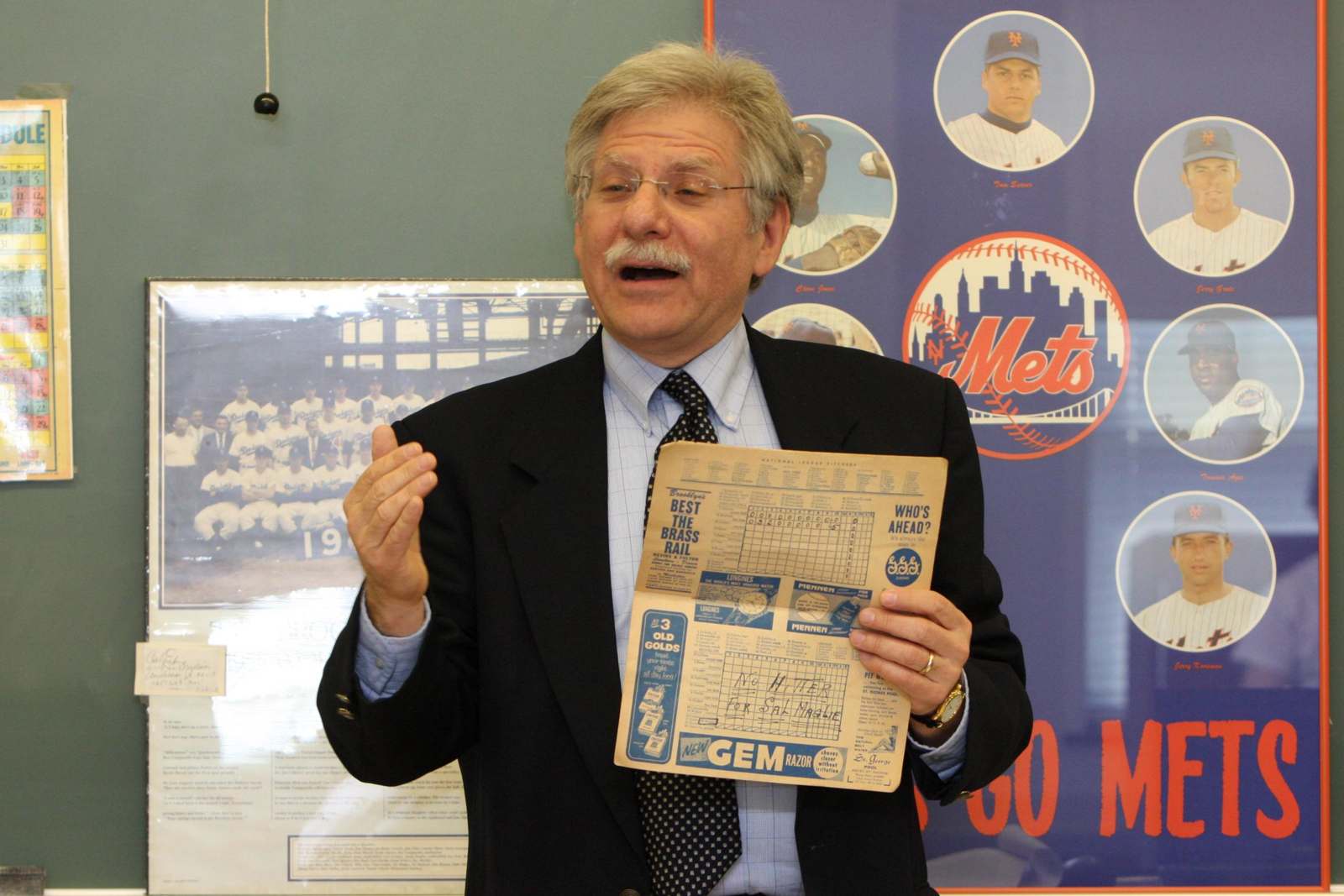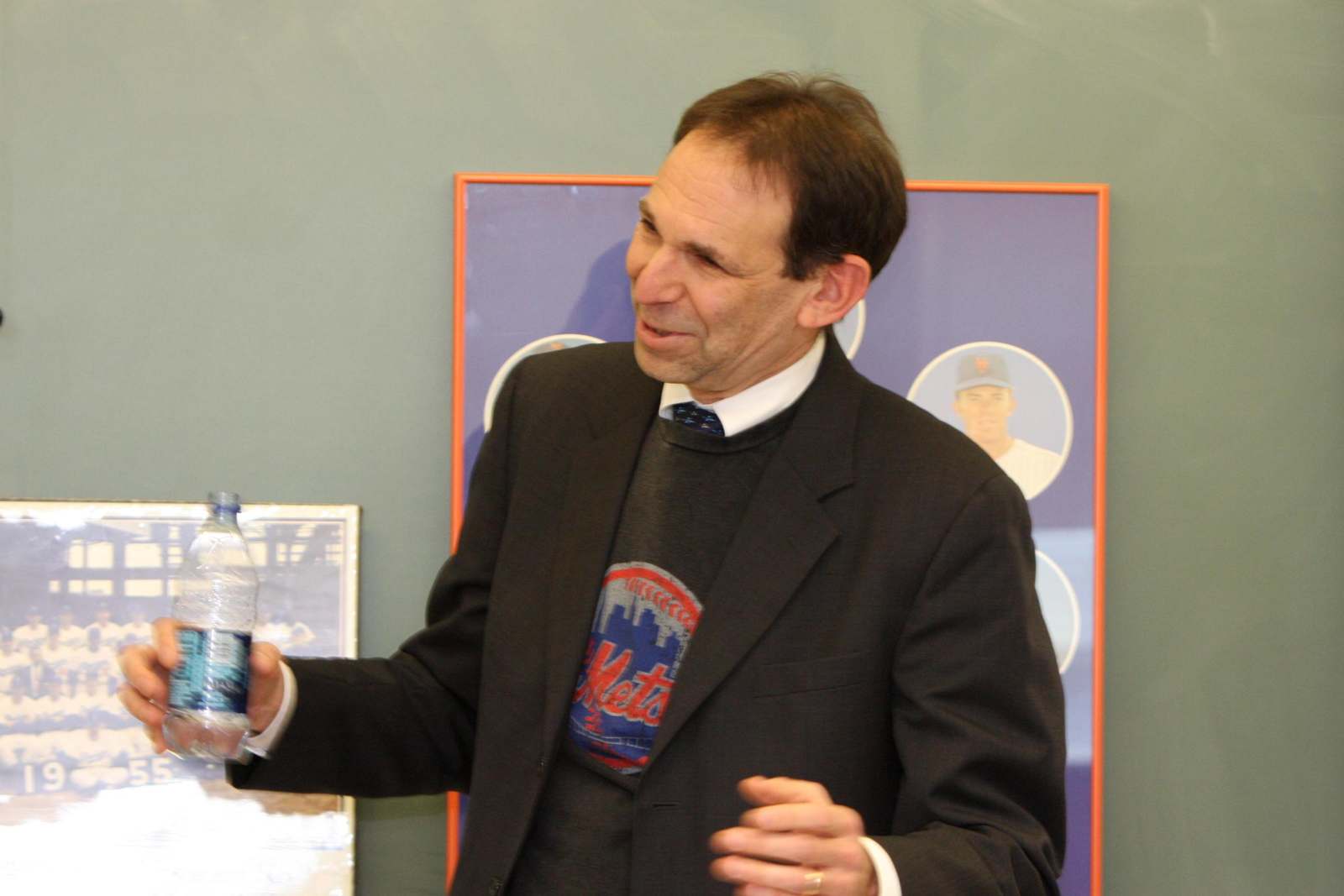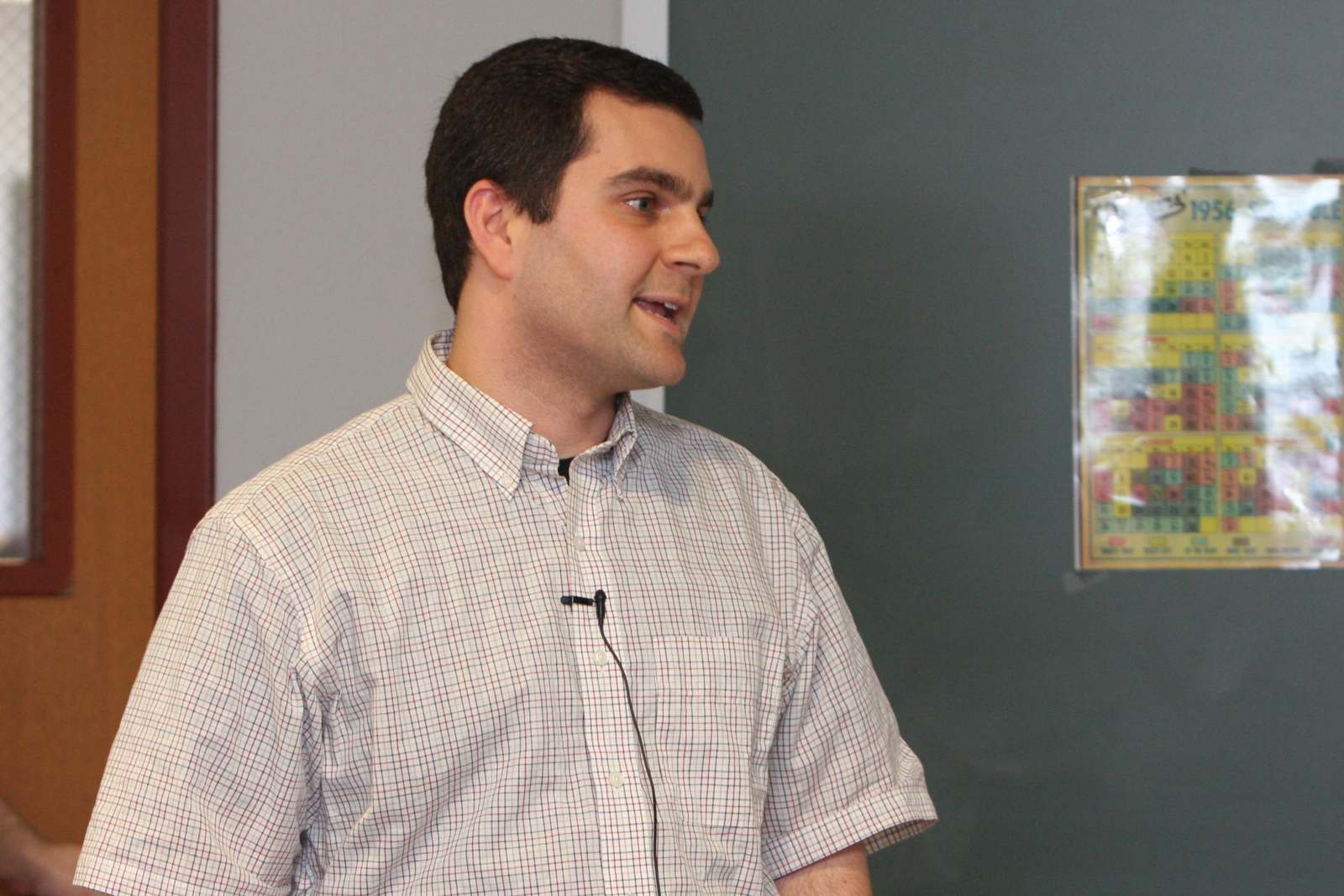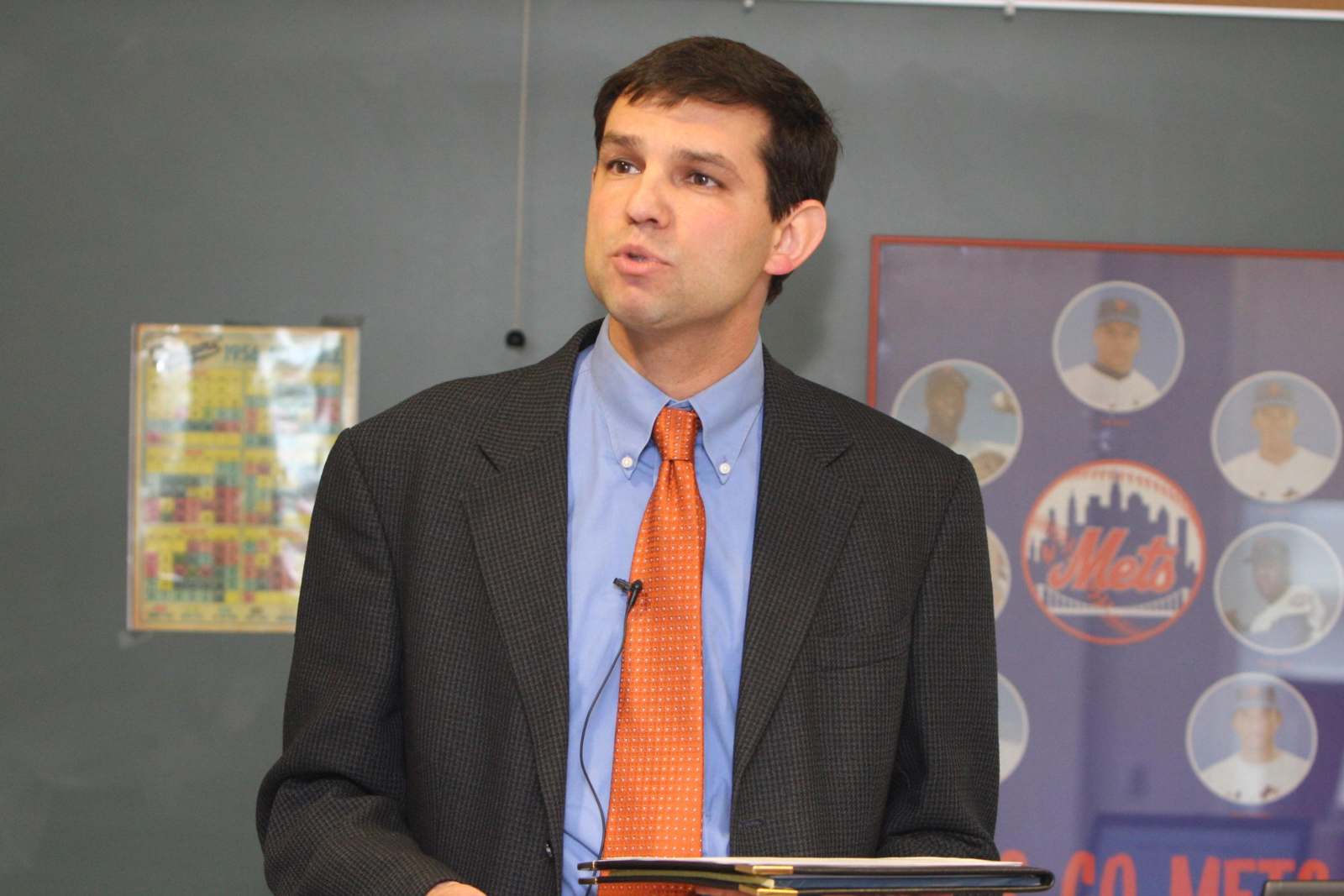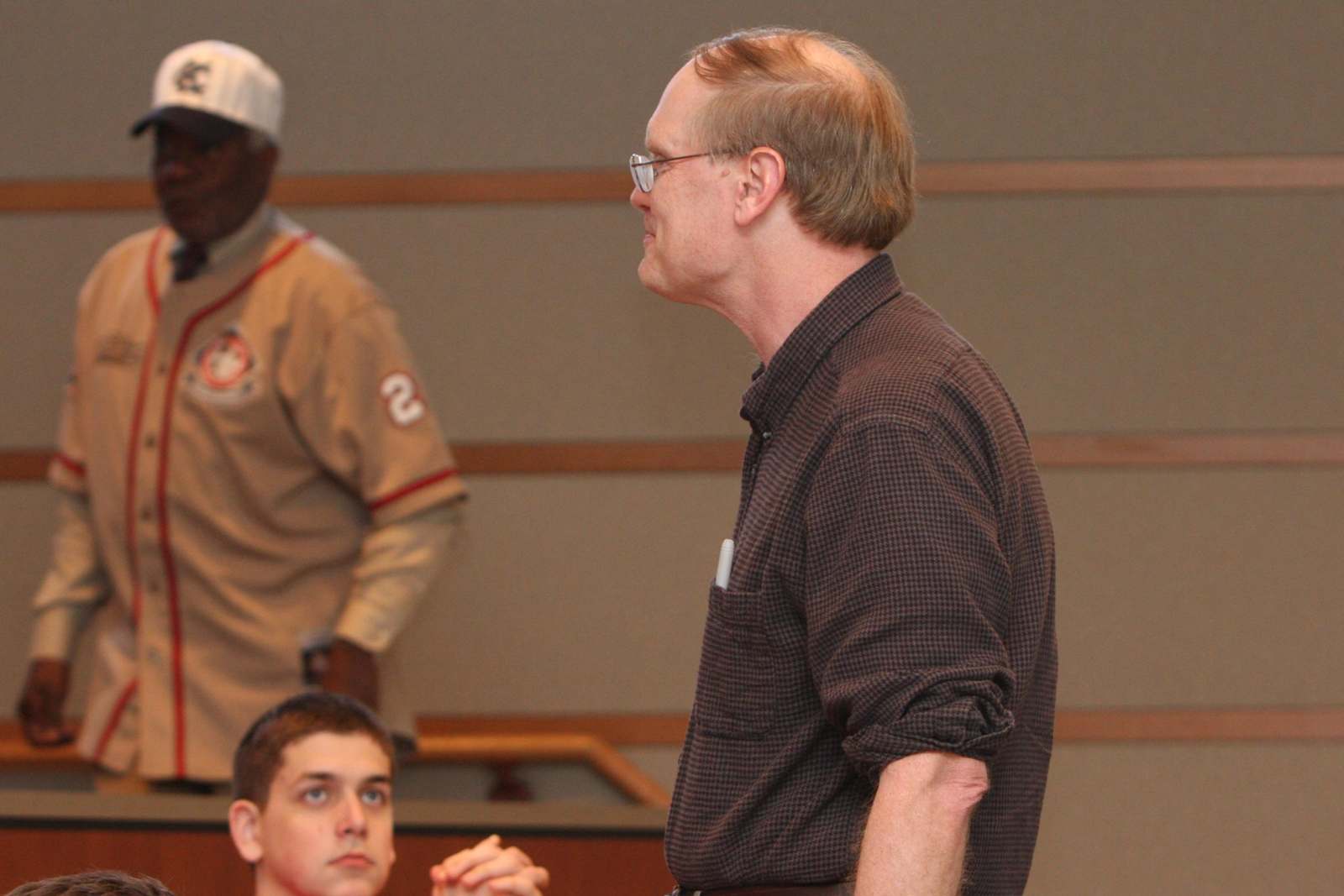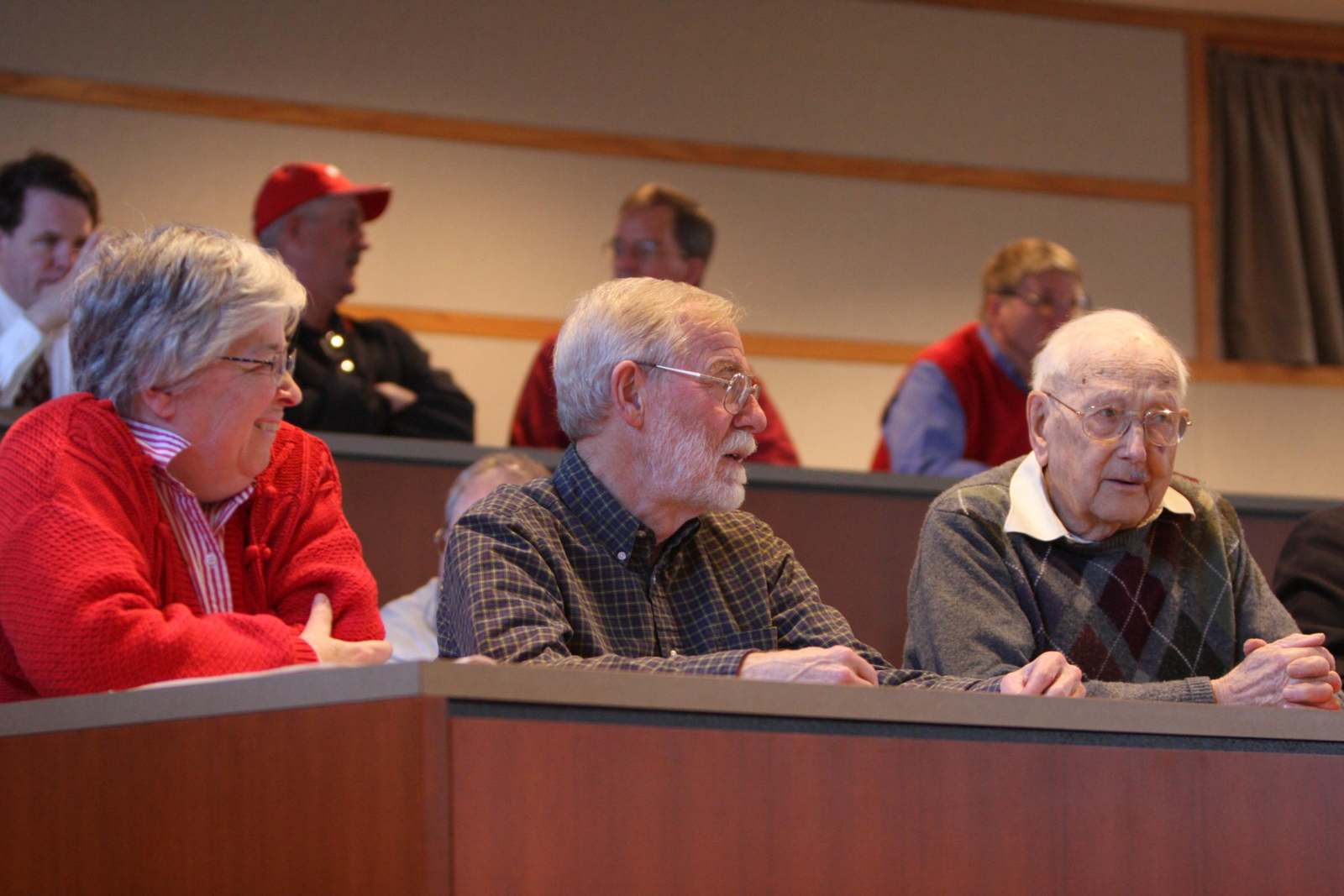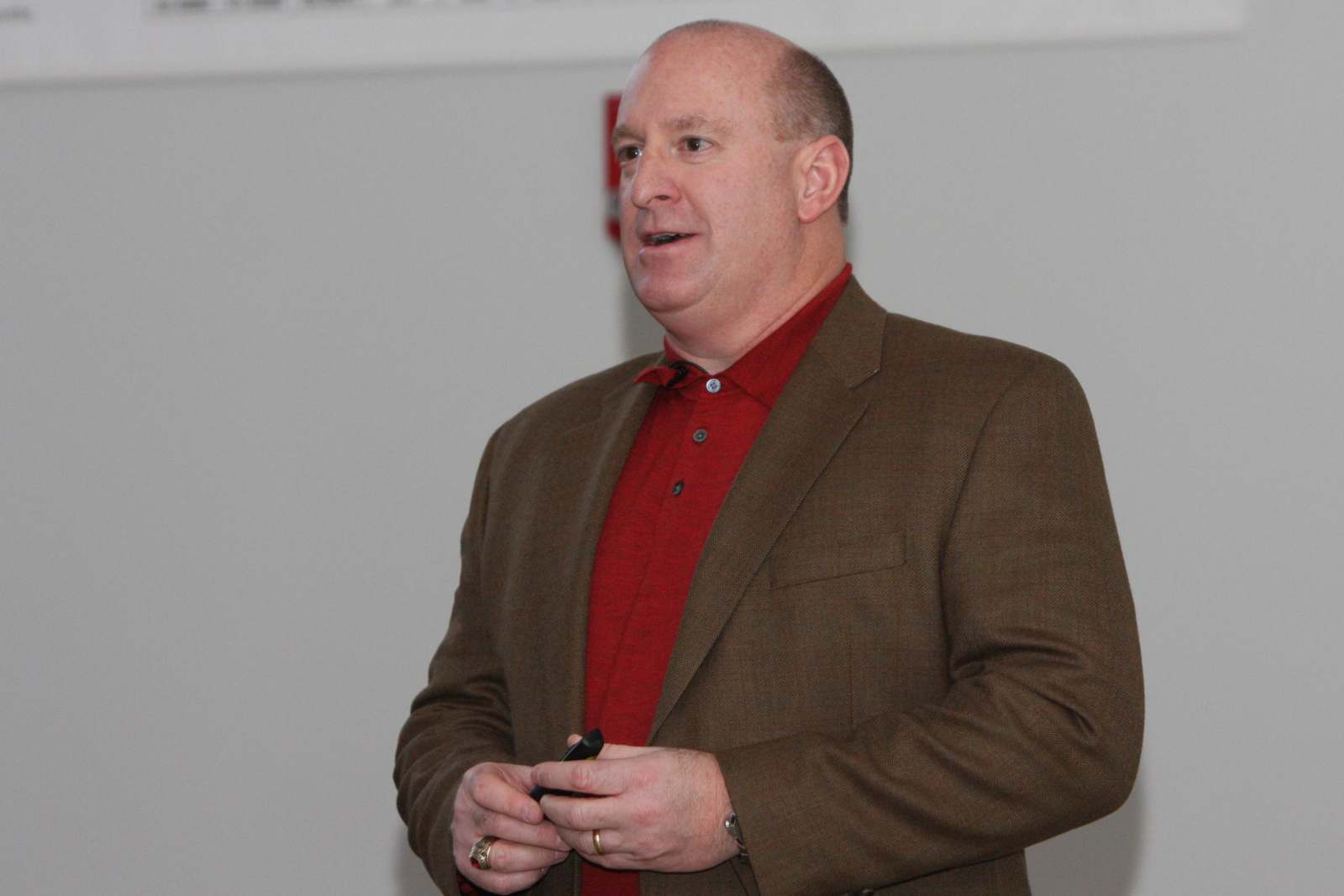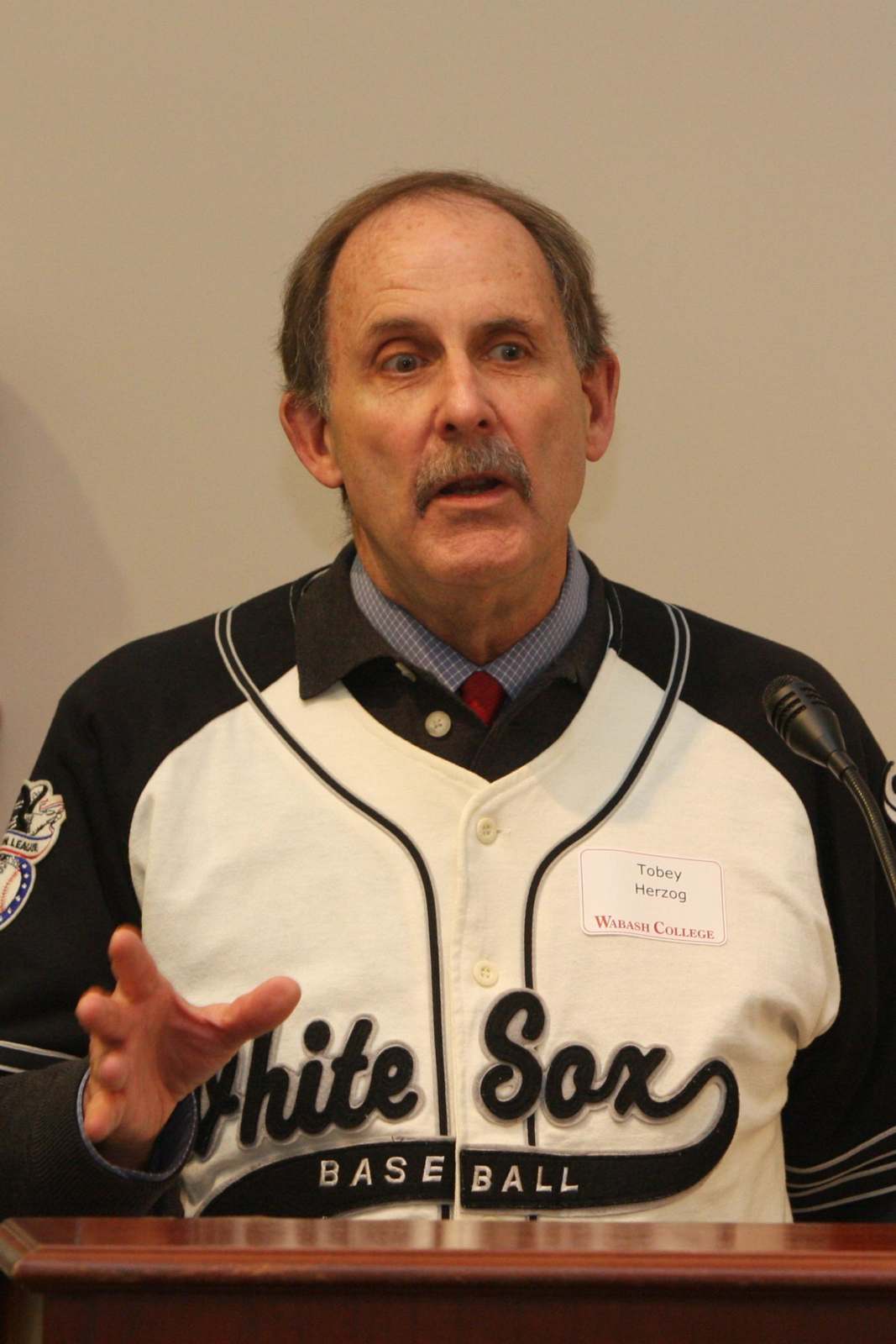Wally at the Bat: A Liberal Arts Symposium on Baseball
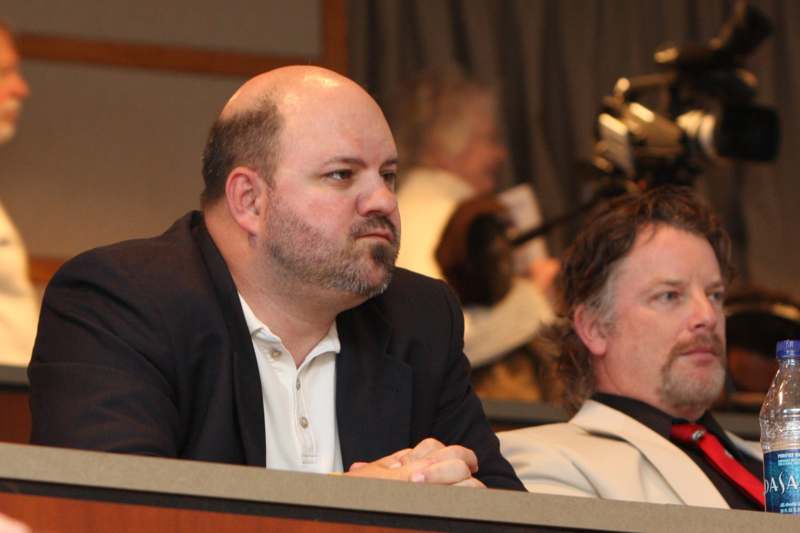
Will Carroll, an award-winning author and writer for Baseball Prospectus, was the keynote speaker for Wally at the Bat: A Liberal Arts Symposium on Baseball. The event was an alumni-initiated program designed to bring Wabash students, faculty, staff, and alumni together in celebration of the liberal arts and in a close examination of all the ways baseball touches our lives. Carroll attended the afternoon sessions -- in this photo with History Professor and Cardinals fan Stephen Morillo — before keynoting the banquet Friday night. Professor Morillo first invited Carroll to campus five years ago to speak about sports medicine and injuries, and helped sponsor Carroll's keynote talk using the Hadley Fund.
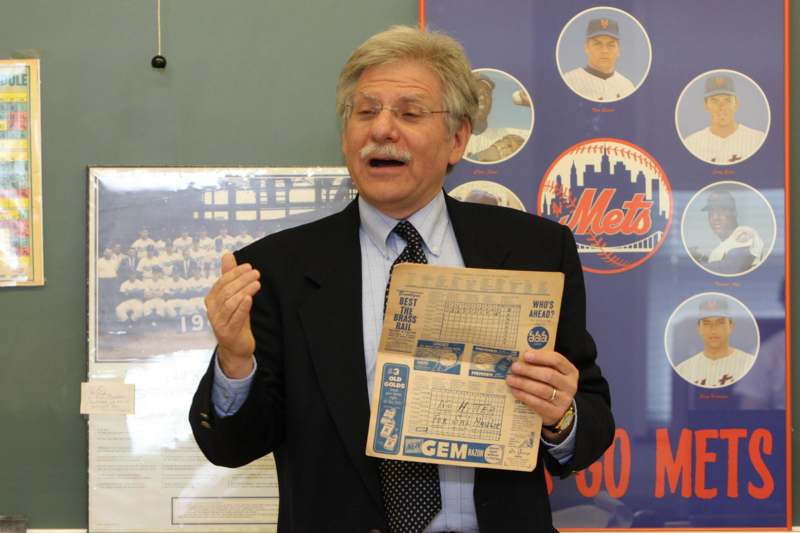
English Professor Warren Rosenberg grew up a Brooklyn Dodgers fan, but shifted loyalty to the New York Mets after the Dodgers left Brooklyn for Los Angeles when he was a young man. In this photo he shows the audience a prized scorecard from Sal Maglie's no-hitter against the Phillies on September 25, 1956. "Next to my daughter's birth certificate and marriage license, this is my most treasured document," he said.
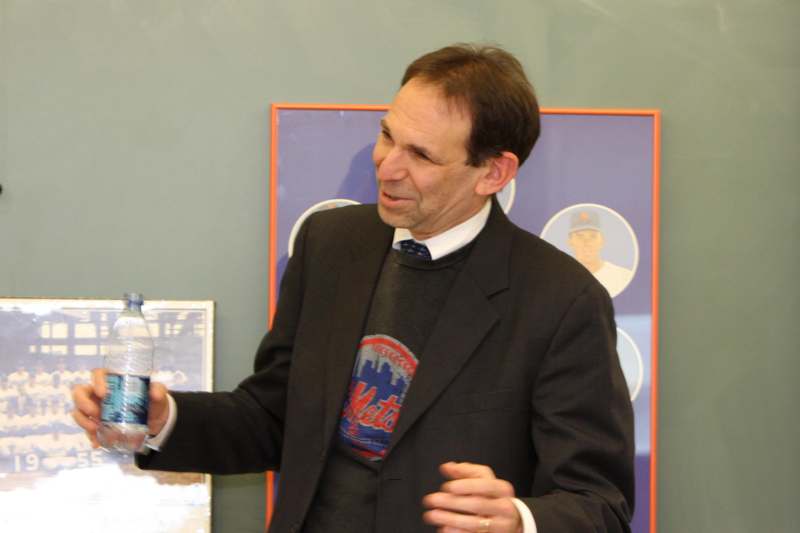
Dean of Admissions and Financial Aid Steve Klein grew up with the New York Mets — literally — and told the audience how he went to Mets games with his father and grandfather, and has shared his love of the game and of the team with his son and daughter. Klein attended the very first game played in Shea Stadium with his grandfather and took his daughter to the very last game played at Shea Stadium in 2008. He was also at the stadium — and in the on-field celebration — when the Amazing Mets stunned the world and won the 1969 World Series, which Klein said, "Remains, to me, the most unlikely turnaround in professional sports."
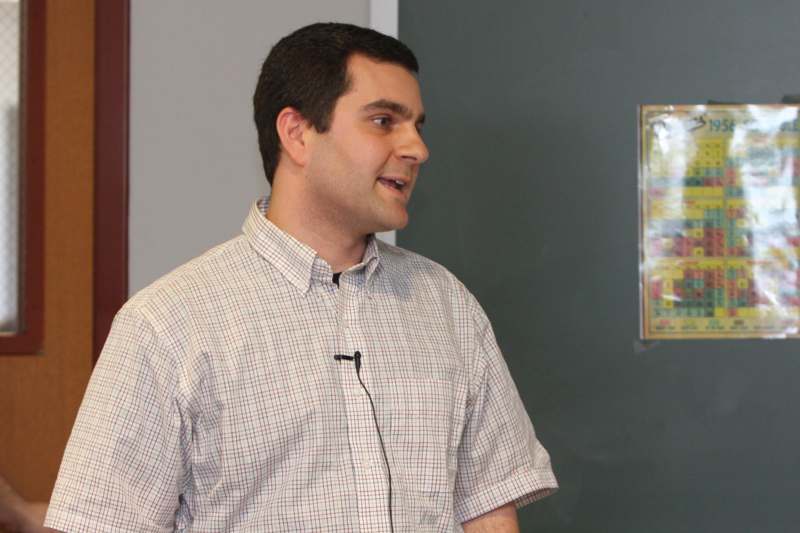
Leave it to Chemistry Professor Lon Porter to do a detailed — and often hilarious — breakdown of the materials chemistry behind "building a better bat." Professor Porter shared with the audience the complicated physics behind a 90 miles-per-hour fastball's collision with wooden, aluminum, titanium, and even graphite bats. He also dispelled the myth that corked bats favor hitters, though suggested that any advantage was likely psychological. He threw in enough math to keep his talk liberal arts through and through — saying that a 90 miles-per-hour pitch striking a bat accelerating at 110 miles-per-hour results in roughly 18,000 Newtons or the equivalent of two tons of force. Uh, and did we mention he had some cool cartoon bats, the flying kind?
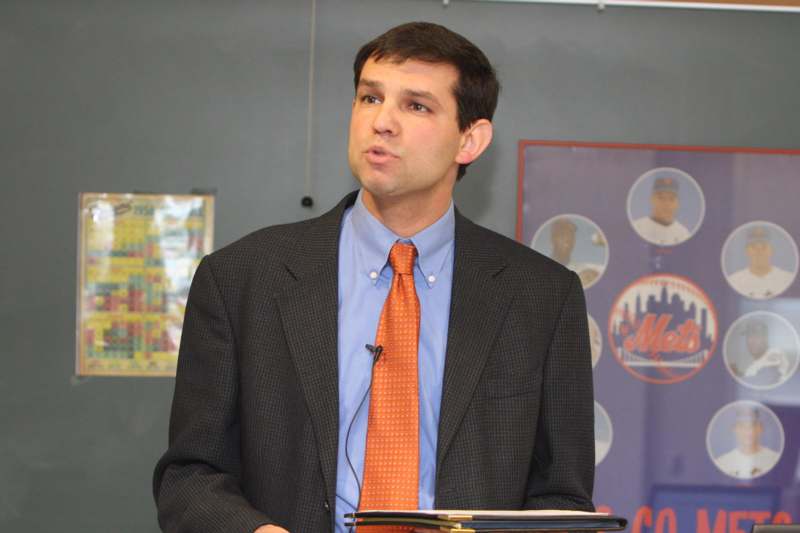
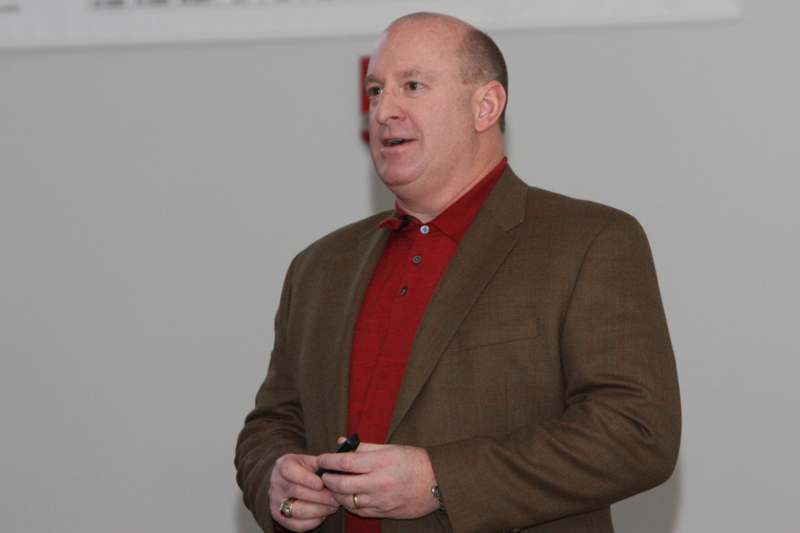
Sports Psychologist Chris Carr ’82 has worked with elite athletes in virtually every competitive sport — from the US Ski Team to Major League Soccer to the Indiana Fever. But in his symposium talked, Dr. Carr discussed the six years he spent as team psychologist for the Kansas City Royals. He recalled taking a phone call from George Brett shortly after taking the job. He asked the Hall of Famer what the toughest part of the game was for him. Brett's reply: "Doc, if I have 100 at bats and get on base 30 times, I make the All-Star Game. If I carry my last at bat to the plate, I'll have a long career in the minor leagues." Carr said the best work he did with the Royals was when he'd go out to left or right field to shag balls during batting practice, during which time players would casually come up to him and share their problems and fears.
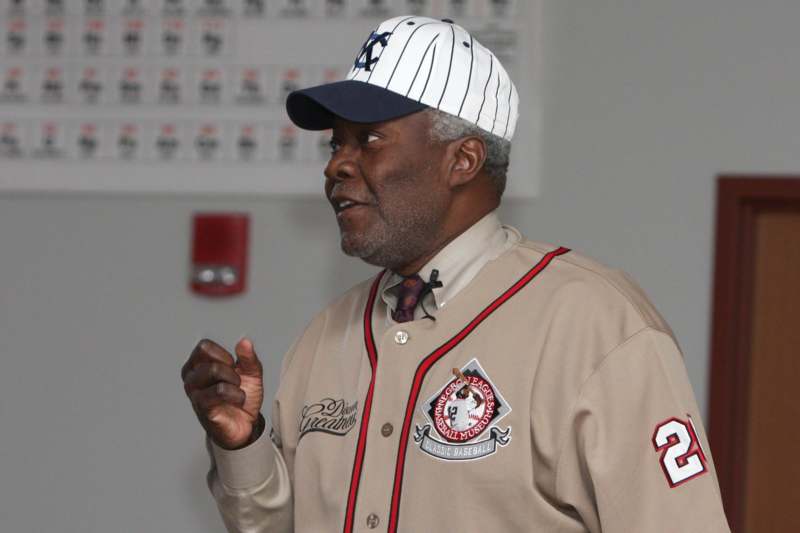
Emeritus Trustee Bob Wedgeworth ’58 gave a talk at the baseball symposium about growing up in the latter days of the old Negro Leagues. His talk, "Only the Ball Was White," detailed what it was like to attend Kansas City Monarchs' games on Sunday afternoons. He painted a picture that he said was like "Easter Sunday" every weekend when the Monarchs were in town, when folks would dress up, go to church, and have a parade that emptied directly into the stadium, where 10-15,000 fans — all African American — would cheer on the Monarchs. Wedgeworth's brother in law, Al "Slick" Surratt, played three seasons with the Monarchs and presented symposia led by Faye Vincent and appeared in Ken Burns' stunning baseball documentary.

